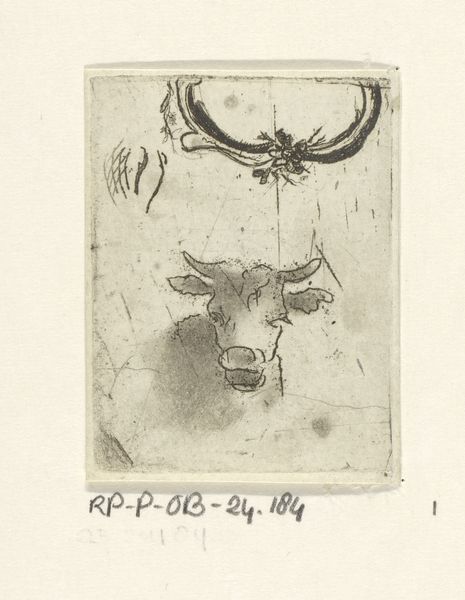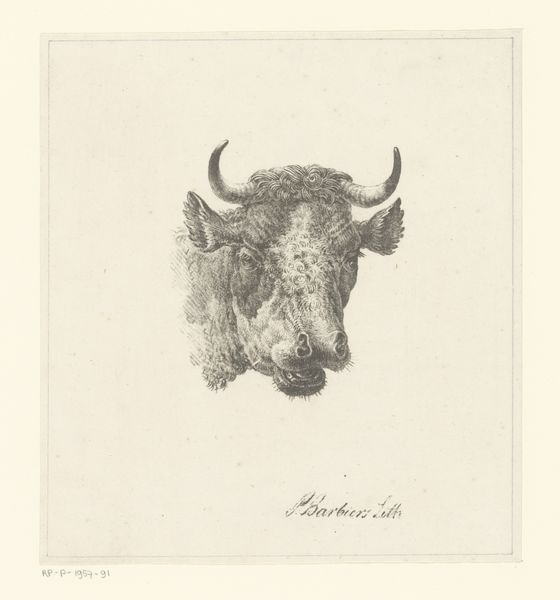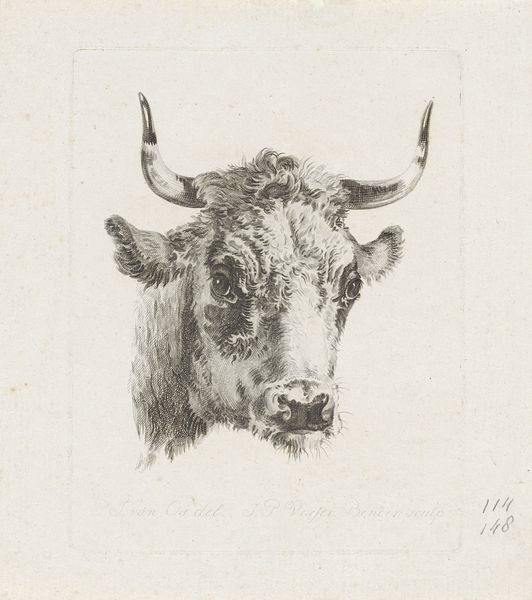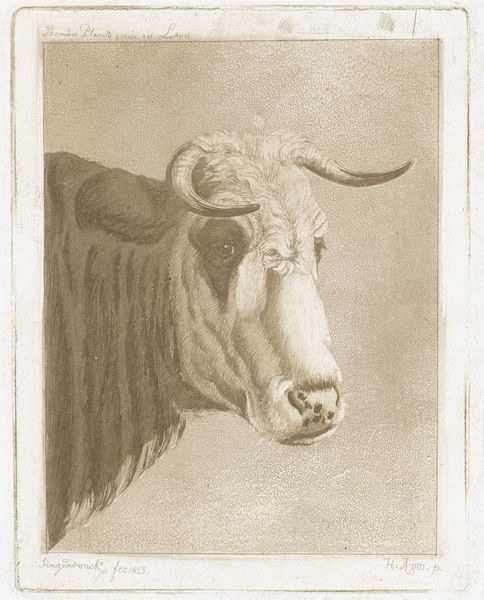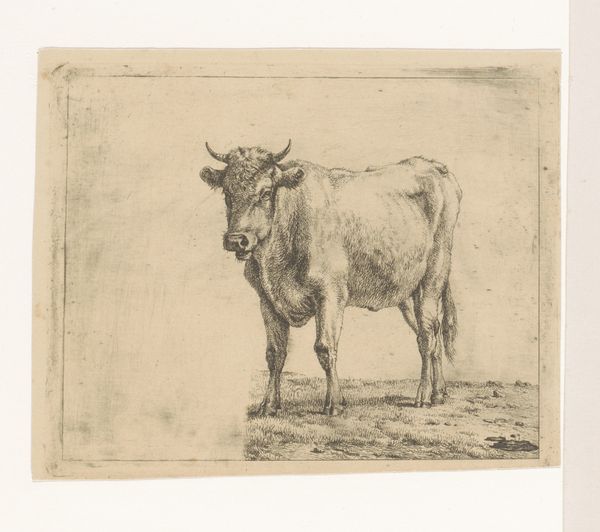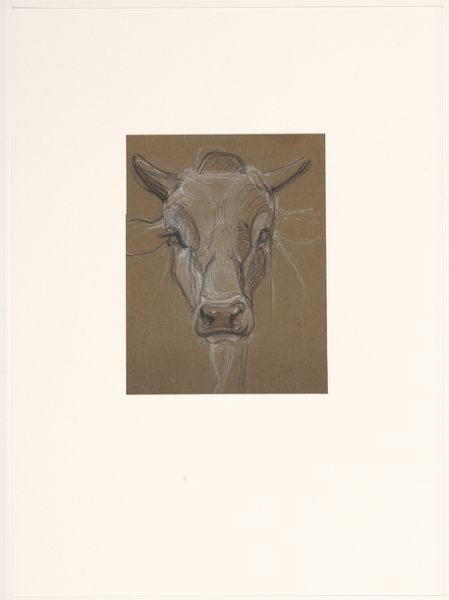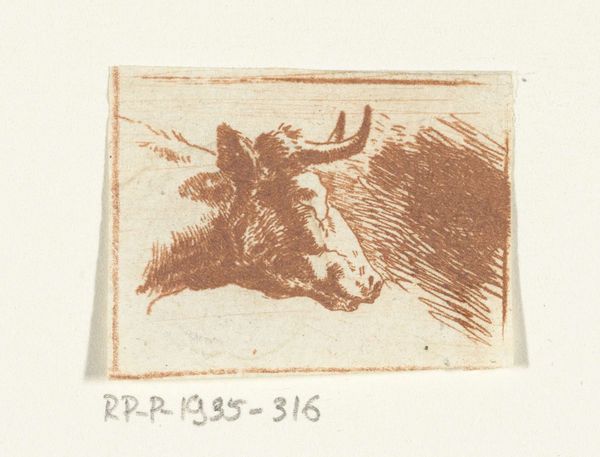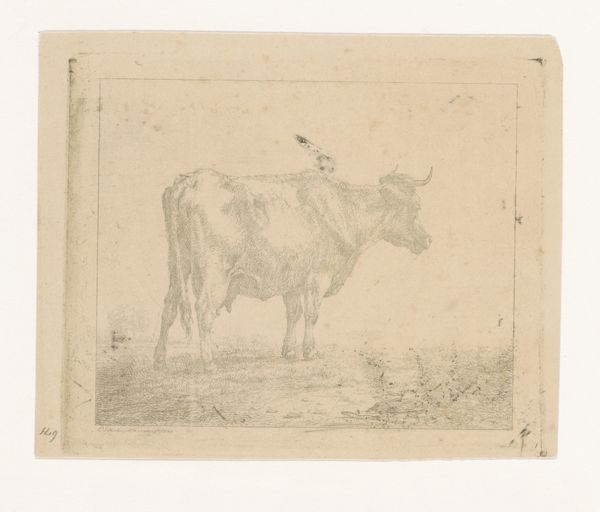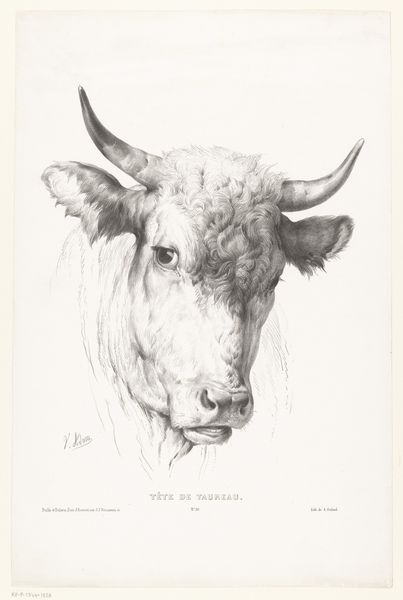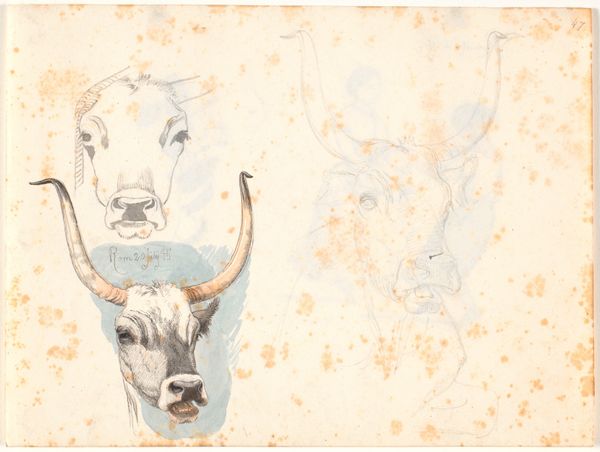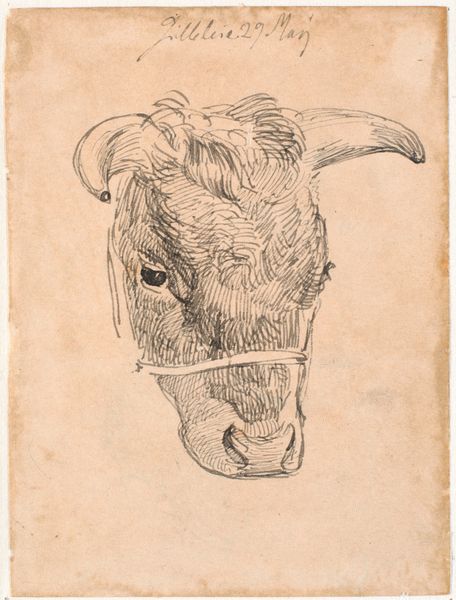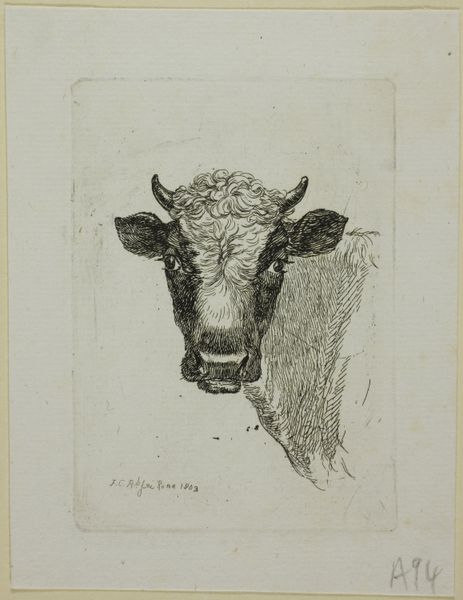
print, etching
#
dutch-golden-age
# print
#
etching
#
old engraving style
#
landscape
#
realism
Dimensions: height 42 mm, width 32 mm
Copyright: Rijks Museum: Open Domain
Editor: Here we have "Koeienkop," or "Cow's Head," an etching by Jan van Noort, created sometime between 1766 and 1837. It's surprisingly intimate for such a rustic subject, almost like a quick sketch from life. What strikes you most when you look at it? Curator: It evokes the enduring symbolism of the ox, a figure prevalent across diverse cultures for millennia. Consider its ancient associations with strength, provision, and sacrifice—a weighty convergence of primal imagery. Does the seeming fragility of the etching medium temper these archetypal connections, do you think? Editor: That’s a very interesting take. The fragility does make it seem more immediate, perhaps less about grand concepts and more about a single, observed creature. Curator: Observe, though, the tension created. The image presents a very quotidian animal, yet it’s rendered through a technique redolent with art-historical associations. Doesn't that juxtaposition call attention to the broader implications of something we might otherwise overlook? Cattle were essential to the Dutch Golden Age landscape and economy, signifying prosperity. Editor: I didn’t consider that! Seeing it just as a sketch made me miss that broader cultural context. Curator: These images live in cultural memory. What at first seems to be a simple portrait whispers of deeper narratives regarding our connection to the animal world and our enduring needs. Editor: So it's both an individual and a symbol, at once fleeting and timeless. I'll never look at a cow quite the same way. Curator: Precisely. By looking closely, this etching shows us the powerful longevity of even simple images.
Comments
No comments
Be the first to comment and join the conversation on the ultimate creative platform.
